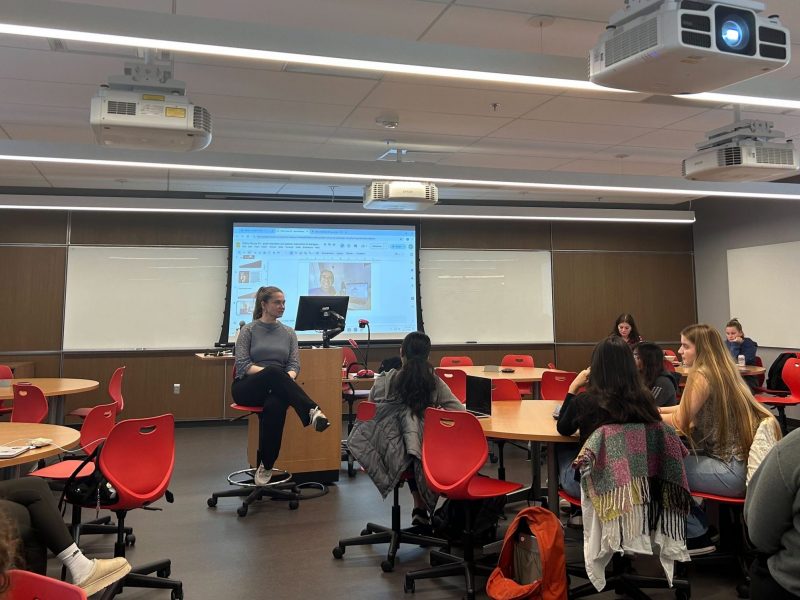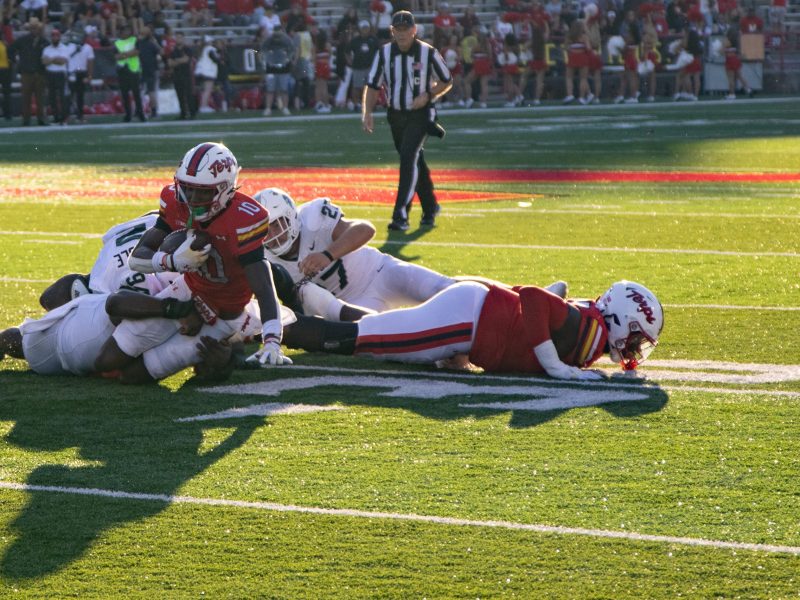
The Office of Undergraduate Admissions, housed in the Mitchell Building, could start looking at alternatives to the Common Application.
The University of Maryland is among more than 80 institutions reworking their application processes to make them less stressful and more engaging for high schoolers.
The Coalition of Access, Affordability and Success will release a new online application by next summer that can be used as an alternative to the popular Common Application, the group announced last month. Current high school juniors will be able to apply to this university using either the Coalition’s application or the university-specific system now in place.
“But after the first year, we’ll move toward using the Coalition application exclusively,” Associate Vice President of Enrollment Management of Undergraduate Admissions Barbara Gill said.
The new platform will offer online tools aimed at preparing students for the application process throughout their high school years.
READ MORE: STUDY: Graduation rate gap for low-income UMD students above average
“There’s a sense that the application process right now for students is very rushed,” Coalition spokeswoman Julie Peterson said. “Students start with a blank sheet of paper in the fall of their senior year. They have to try to fill in all the information about who they are, what their interests are and what their story is and then convey it to the universities they’re applying to.”
The online features, which will be available in April, include a “virtual locker” that high school students can fill with materials over four years. While the space is private, they can share pieces of it with others, such as parents, counselors or teachers, to get feedback on their applications.
“When I was in high school, I was a poet and edited the school’s poetry magazine,” Peterson said. “During the time I did that, I could have entered into my ‘virtual locker’ a portfolio of poems I was writing and I could’ve asked my instructor on the magazine to write me a letter of recommendation right then when we were working together and it was all fresh.”
When students are ready to apply to college, they can choose to show pieces of the “virtual locker” to admissions officers.
“This will allow students to stretch out the process and make it more thoughtful,” Gill said. “It will help us get information from students that’s more reflective.”
Four years since she applied to college, senior Emily Tuttle can easily recall the stress she felt trying to include everything she did in high school on her application.
“I remember sitting there and trying to remember everything I’ve ever done that could possibly look good to a college,” the English major said. “Everyone has that feeling of knowing they’re forgetting something important. I would’ve loved a tool like this. It’s a great idea.”
The Coalition says this approach also will benefit low-income students.
“One of the things we know from research is that the college admissions process is very confusing, especially for students who come from schools without a lot of resources or who are the first in their family to go to college,” Peterson said. “We hope this gets students thinking about college a lot earlier and that it’s actually not that hard to go through this process and they can get a lot of help from others.”
To be eligible for the Coalition, public universities must demonstrate they have affordable tuition and high graduation rates, while private schools must show they can meet the full, demonstrated financial aid needs of admitted students. They must also have a graduation rate of at least 70 percent.
This university has a six-year graduation rate of 83 percent and an in-state tuition of $9,996. Ten other Big Ten institutions fit the requirements and joined the Coalition as well.
“For students who think, ‘College is just out of reach for me,’” Peterson said, “this group of schools is sending a powerful message that yes, college is for you. You can afford it, and when you go here, you will be successful and you will graduate.”


